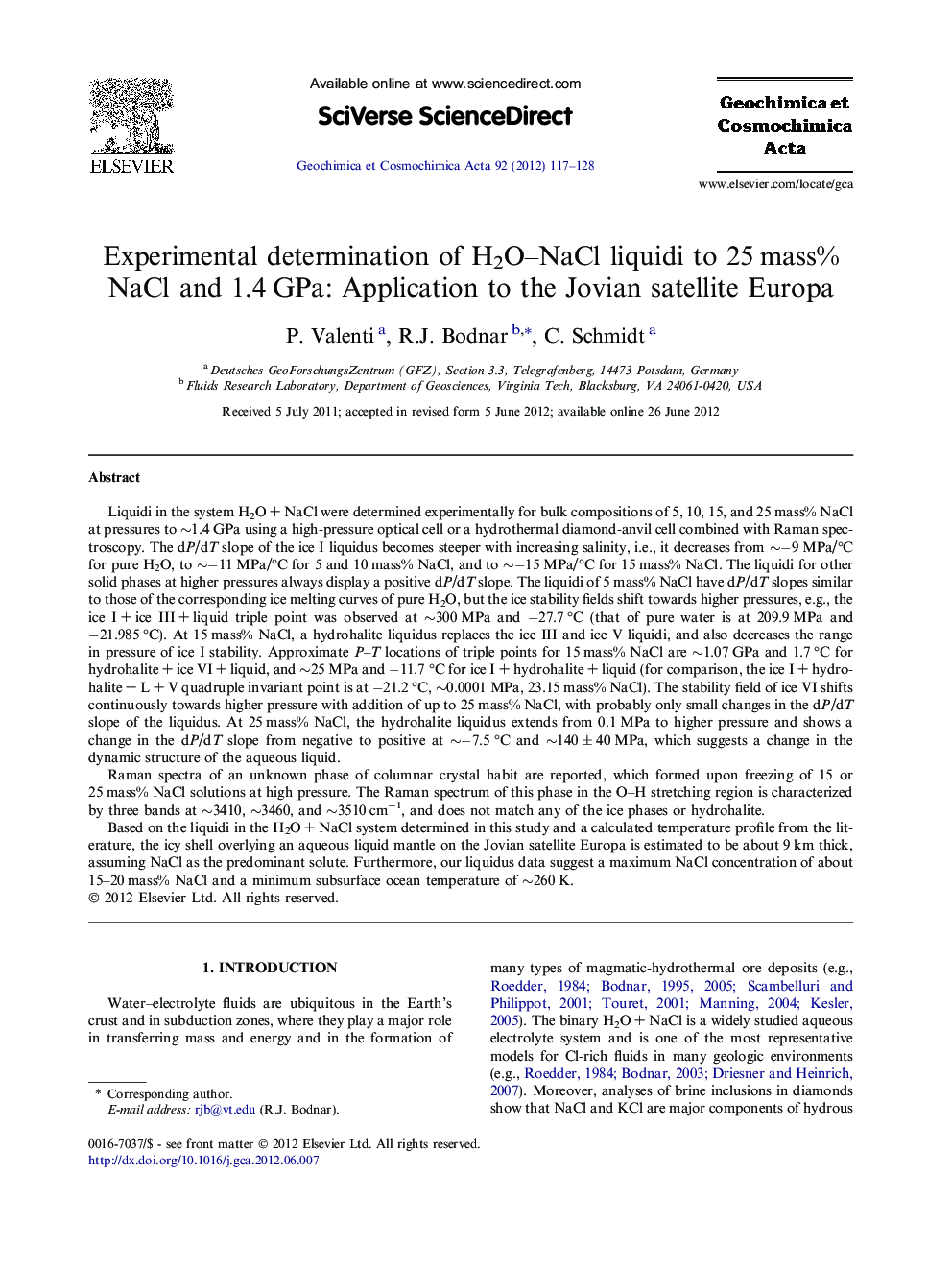| Article ID | Journal | Published Year | Pages | File Type |
|---|---|---|---|---|
| 4702790 | Geochimica et Cosmochimica Acta | 2012 | 12 Pages |
Liquidi in the system H2O + NaCl were determined experimentally for bulk compositions of 5, 10, 15, and 25 mass% NaCl at pressures to ∼1.4 GPa using a high-pressure optical cell or a hydrothermal diamond-anvil cell combined with Raman spectroscopy. The dP/dT slope of the ice I liquidus becomes steeper with increasing salinity, i.e., it decreases from ∼−9 MPa/°C for pure H2O, to ∼−11 MPa/°C for 5 and 10 mass% NaCl, and to ∼−15 MPa/°C for 15 mass% NaCl. The liquidi for other solid phases at higher pressures always display a positive dP/dT slope. The liquidi of 5 mass% NaCl have dP/dT slopes similar to those of the corresponding ice melting curves of pure H2O, but the ice stability fields shift towards higher pressures, e.g., the ice I + ice III + liquid triple point was observed at ∼300 MPa and −27.7 °C (that of pure water is at 209.9 MPa and −21.985 °C). At 15 mass% NaCl, a hydrohalite liquidus replaces the ice III and ice V liquidi, and also decreases the range in pressure of ice I stability. Approximate P–T locations of triple points for 15 mass% NaCl are ∼1.07 GPa and 1.7 °C for hydrohalite + ice VI + liquid, and ∼25 MPa and −11.7 °C for ice I + hydrohalite + liquid (for comparison, the ice I + hydrohalite + L + V quadruple invariant point is at −21.2 °C, ∼0.0001 MPa, 23.15 mass% NaCl). The stability field of ice VI shifts continuously towards higher pressure with addition of up to 25 mass% NaCl, with probably only small changes in the dP/dT slope of the liquidus. At 25 mass% NaCl, the hydrohalite liquidus extends from 0.1 MPa to higher pressure and shows a change in the dP/dT slope from negative to positive at ∼−7.5 °C and ∼140 ± 40 MPa, which suggests a change in the dynamic structure of the aqueous liquid.Raman spectra of an unknown phase of columnar crystal habit are reported, which formed upon freezing of 15 or 25 mass% NaCl solutions at high pressure. The Raman spectrum of this phase in the O–H stretching region is characterized by three bands at ∼3410, ∼3460, and ∼3510 cm−1, and does not match any of the ice phases or hydrohalite.Based on the liquidi in the H2O + NaCl system determined in this study and a calculated temperature profile from the literature, the icy shell overlying an aqueous liquid mantle on the Jovian satellite Europa is estimated to be about 9 km thick, assuming NaCl as the predominant solute. Furthermore, our liquidus data suggest a maximum NaCl concentration of about 15–20 mass% NaCl and a minimum subsurface ocean temperature of ∼260 K.
